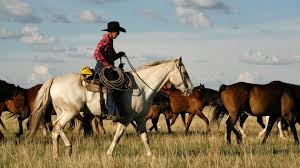
Breaking News
 Mach-23 potato gun to shoot satellites into space
Mach-23 potato gun to shoot satellites into space
 Slouching Toward Technocracy: Is The World Giving In?
Slouching Toward Technocracy: Is The World Giving In?
Trump administration accelerates dismantling of Education Department, shifts key programs...
 Texas secures $41.5 million settlement from Pfizer and Tris Pharma for knowingly poisoning kids...
Texas secures $41.5 million settlement from Pfizer and Tris Pharma for knowingly poisoning kids...
Top Tech News
 New Gel Regrows Dental Enamel–Which Humans Cannot Do–and Could Revolutionize Tooth Care
New Gel Regrows Dental Enamel–Which Humans Cannot Do–and Could Revolutionize Tooth Care
 Researchers want to drop lab grown brains into video games
Researchers want to drop lab grown brains into video games
 Scientists achieve breakthrough in Quantum satellite uplink
Scientists achieve breakthrough in Quantum satellite uplink
 Blue Origin New Glenn 2 Next Launch and How Many Launches in 2026 and 2027
Blue Origin New Glenn 2 Next Launch and How Many Launches in 2026 and 2027
 China's thorium reactor aims to fuse power and parity
China's thorium reactor aims to fuse power and parity
 Ancient way to create penicillin, a medicine from ancient era
Ancient way to create penicillin, a medicine from ancient era
 Goodbye, Cavities? Scientists Just Found a Way to Regrow Tooth Enamel
Goodbye, Cavities? Scientists Just Found a Way to Regrow Tooth Enamel
 Scientists Say They've Figured Out How to Transcribe Your Thoughts From an MRI Scan
Scientists Say They've Figured Out How to Transcribe Your Thoughts From an MRI Scan
 Calling Dr. Grok. Can AI Do Better than Your Primary Physician?
Calling Dr. Grok. Can AI Do Better than Your Primary Physician?
Administration Announces Vague Help for Ranchers

Today, US Secretary of Agriculture Brooke L. Rollins, Secretary of the Interior Doug Burgum, Secretary of Health and Human Services Robert F. Kennedy, Jr., and Small Business Administrator Kelly Loeffler announced a suite of actions to strengthen the American beef industry, reinforcing and prioritizing the American rancher's critical role in the national security of the United States. Since 2017, the United States has lost over 17% of family farms (I think it is 8-9% of all farms—Nass), more than 100,000 operations over the last decade (160,000 farms from 2017-2024 according to USDA figures—Nass). The national herd is at a 75-year low while consumer demand for beef has grown 9% over the past decade.
Because increasing the size of the domestic herd takes time, the US Department of Agriculture (USDA) is investing now to make these markets less volatile for ranchers over the long term and more affordable for consumers. (Investing in what?—Nass). "America's food supply chain is a national security priority for the Trump administration. We are committed to ensuring the American people have an affordable source of protein and that America's ranchers have a strong economic environment where they can continue to operate for generations to come," said Secretary Brooke Rollins.
"At USDA we are protecting our beef industry and incentivizing new ranchers to take up the noble vocation of ranching. Today, USDA will immediately expedite deregulatory reforms, boost processing capacity, including getting more locally raised beef into schools, and working across the government to fix longstanding common-sense barriers for ranchers like outdated grazing restrictions." "At Interior, the Department is slashing red tape and restoring grazing access on public lands to support the livelihoods of hardworking Americans in the ranching industry," said Secretary of the Interior Doug Burgum….
What to do? Here is the easiest and quickest solution:
Expand local meat processing. There is a meat slaughter and processing bottleneck in the US, which has been present for 10 years. Only meat slaughtered in a USDA-inspected plant can be sold across state lines. But there are not enough facilities and not enough inspectors.
USDA has put hundreds of millions of taxpayer dollars into expanding huge meat processing facilities or building new ones, while its regulations have led to the shutdown of more than a thousand small processing plants. Only one of the new facilities taxpayers helped pay for is east of the Mississippi, where most Americans live. So the processing bottleneck for most Americans will not be solved despite these considerable investments.

 Unbanked In A Connected World
Unbanked In A Connected World

